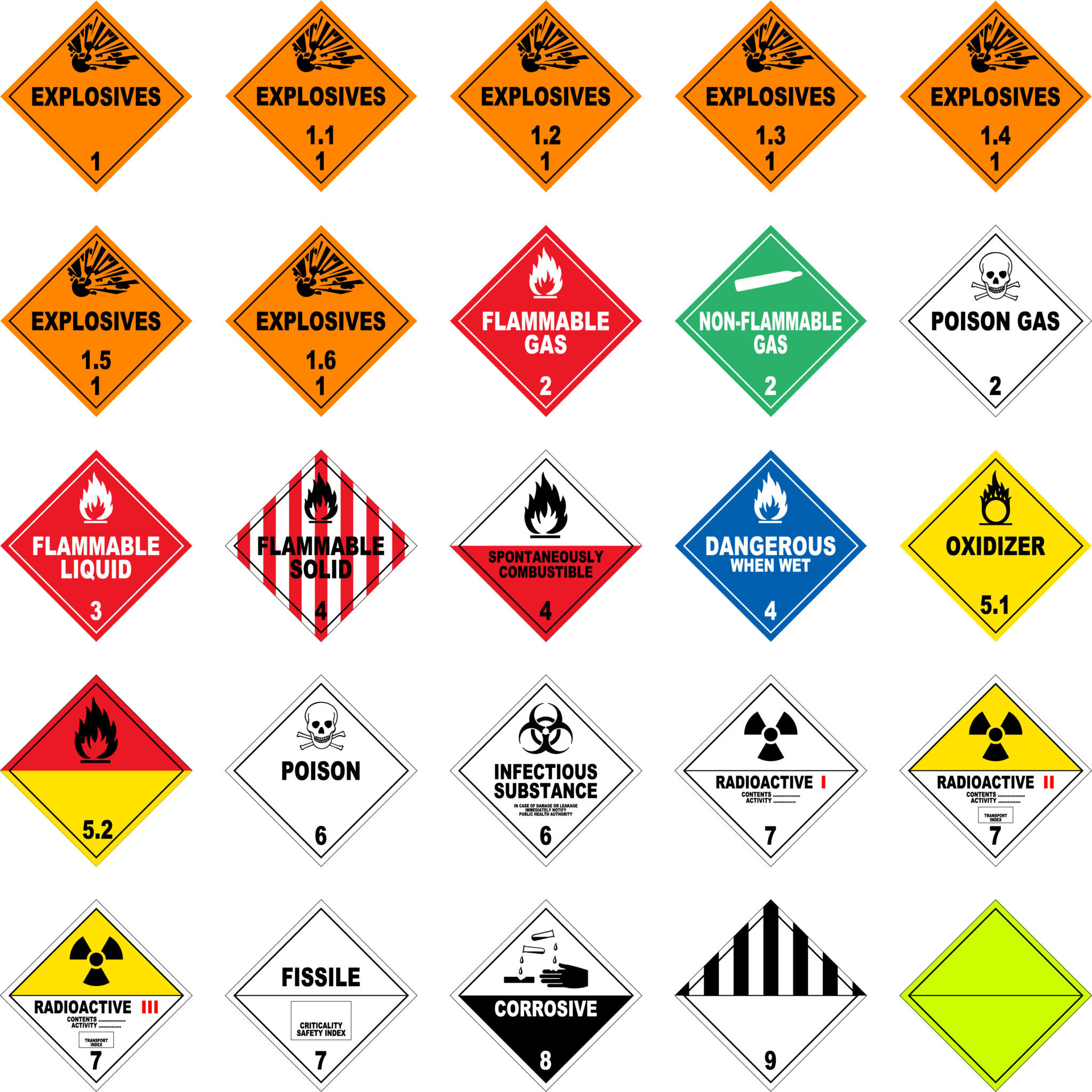
SafetySkills is proud to announce our series of eight modules over the TDG Regulations, their guidelines, and how they apply to different job functions.
Introduction to the Transportation of Dangerous Goods
The TDG governs all transportation of dangerous goods in domestic and foreign commerce, and their primary goal is to protect the safety of the public and of workers involved in transporting dangerous goods or responding to dangerous goods incidents. All people involved in the packaging, marking, labeling and transporting of dangerous goods must be familiar with the TDG for the proper handling and safeguarding of dangerous goods. Learners who successfully complete this module should be able to recognize the purpose and organizational structure of the TDG, key terms used in the TDG, and the training requirements outlined in the TDG.
Classification of Dangerous Goods
Transport Canada classifies materials by their primary hazard. There are 9 distinct classes which are divided by type, not severity. For example, Class 1 materials are not necessarily more or less hazardous than Class 9 materials, they just possess different hazards. Some of these classes are then broken down into multiple divisions. Understanding the hazard classes and divisions is essential to being able to identify dangerous goods and recognize the information being provided by labels, markings, shipping documents and other materials. Learners who successfully complete this module should be able to recognize the nine classes of dangerous goods and their divisions. Workers responsible for identifying or classifying unknown dangerous goods will need additional training.
Schedule 1 of the TDG
Schedule 1 is found in the appendix of the TDG Regulations. It lists more than 3,000 dangerous goods and is the backbone of the TDG. It provides basic description information for each dangerous good, such as its proper shipping name, UN number and hazard class, as well as information to identify which regulations apply to that material, including regulations for packaging, marking, labeling, placarding, preparing shipping documents, and restrictions that apply to transporting the material. Learners who successfully complete this module should be able to recognize the organization of Schedule 1 of the TDG legislation and recall the information Schedule 1 contains.
Shipping Documents

Dangerous Goods Marking
When an accident causes dangerous goods to be released during transportation, the vehicle operator, emergency response teams, and surrounding community all face imminent danger. To aid emergency response teams, Transport Canada developed a system of marking containers so emergency responders can quickly identify dangerous goods. Improperly marked or un-marked dangerous goods shipments place the lives of these individuals and others at risk. This module will review how marks are used to communicate valuable information to these emergency responders, and others who deal with these materials on a daily basis. Learners who successfully complete this module should be able to recognize the general requirements for dangerous goods marking, and the appearance and formatting requirements for Transport Canada marks, labels and placards. They should also be able to recognize the marking requirements for specific package types and specific hazards.
Means of Containment

Transportation Security Awareness
Security risks associated with dangerous goods transportation are encountered in every aspect of the job. A 2010 report by the Mineta International Institute for Surface Transportation Policy Studies found that ground transportation operations were at particular risk from theft and potential terrorism, especially routine shipments of flammable or toxic materials which are not well secured. Having a security plan in place can ensure that workers are not only aware of these risks but are also active in preventing these risks from developing into real incidents. Learners who successfully complete this module should be able to recognize security risks associated with dangerous goods transportation and recommended methods for enhancing dangerous goods transportation security.
Dangerous Goods Ground Transportation
This module is designed to help learners understand the aspects of dangerous goods handling, storage, segregation, loading and unloading, and recordkeeping which apply specifically to transportation by highway or rail. This module assumes that learners have already received training over Schedule 1 of the TDG and the general requirements for shipping documents and proper packaging for dangerous goods. This information can be obtained from the other modules in this series, or from equivalent training. Learners who successfully complete this module should be able to identify general requirements affecting the transportation of dangerous goods by ground.



